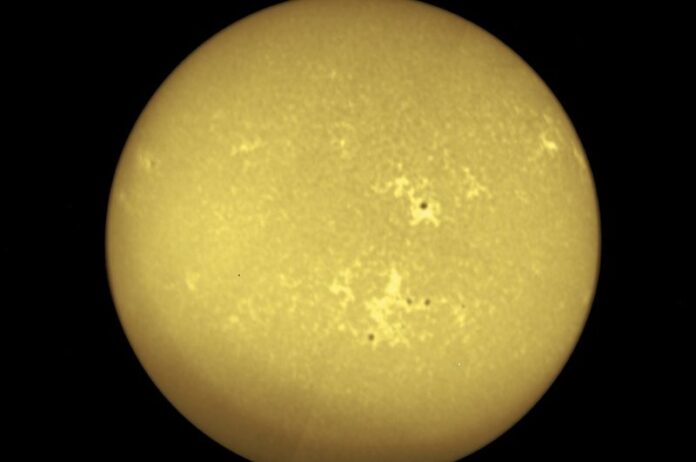Aditya L1’s Historic Journey to the Sun
India’s first solar observatory, Aditya-L1, has made a significant stride in space exploration by reaching near the Lagrangian Point (L1), a million kilometres from Earth. This positioning marks a historic moment, as it is the closest proximity an Indian spacecraft has achieved to the Sun.
Final Orbit Insertion Set for Saturday
The Indian Space Research Organisation (ISRO) is preparing for a crucial step in the mission. On Saturday afternoon, Aditya L1 will enter a halo orbit around L1, providing a clear view of the sun for five years. Positioned at L1, 150 million kilometres from the Sun, it balances gravitational and centrifugal forces. This offers a key spot for solar studies.
Orbital manoeuvres and Challenges
Maintaining Aditya L1’s position will necessitate frequent adjustments, particularly to avoid collisions with nearby spacecraft. Consequently, for the orbital insertion, ISRO intends to temporarily shut down the spacecraft’s seven scientific instruments and subsequently fire its thrusters. Achieving this in a single attempt is crucial for fuel conservation.
Instruments Aboard Aditya L1
Once in orbit, Aditya L1 will power up its instruments, including the Solar Ultraviolet Imaging Telescope (SUIT), to study various solar phenomena. These instruments will explore solar storms, the disparity in temperatures between the sun’s surface and outer layers, and other mysteries. The unique position of Aditya L1 allows for extensive observation of the solar corona, a key area for understanding solar storms.
Activation of All Instruments by January’s End
ISRO has been actively communicating with Aditya L1, gathering data from the already operational payloads. By the end of January, all instruments should be fully operational. This event marks a significant milestone for Indian astrophysicists, as they will capture the full disc image of the Sun for the first time using an indigenously developed instrument.
Significance and Future Studies of Aditya L1
Aditya L1’s initial images reveal key details of the sun’s photosphere and chromosphere. Studying these aspects is vital for understanding solar impacts, like CMEs, on satellites and the Earth. This mission marks a new era in solar research, aimed at better predicting and managing solar weather effects.




Your blog helped me learn about Aditya L1!
An insightful exploration of India’s Aditya L1 Mission, illuminating its pivotal role in advancing solar observation and understanding space weather phenomena. A leap forward in scientific exploration!
An illuminating exploration of India’s Aditya L1 Mission, showcasing the nation’s strides in solar observation. A stellar endeavor shedding light on the Sun’s mysteries and its impact on Earth.
An insightful exploration of India’s pioneering Aditya L1 Mission, shedding light on its ambitious journey toward understanding the Sun’s mysteries and its crucial implications for space exploration and Earth’s wellbeing.
Aditya L1 Mission showcases India’s commitment to solar exploration, promising groundbreaking insights into the Sun’s dynamics. A leap forward in space science, eagerly anticipated for its potential discoveries!
Insightful coverage! Aditya L1 mission marks India’s pioneering stride in solar observation, promising valuable data for understanding space weather’s impact on Earth. Looking forward to more updates!